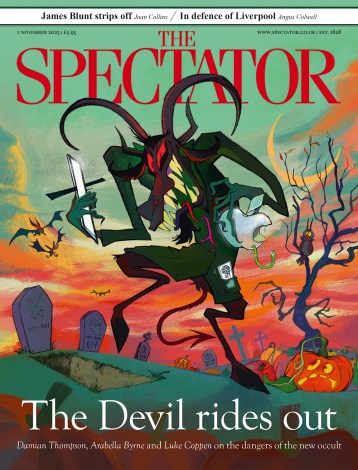‘Sexual intercourse began in 1963,’ wrote Philip Larkin; consumer debt, with similar connotations of gratification and regret, began in Britain three years later with the launch of Barclaycard, based on the model of the world’s first mass-market credit card, BankAmericard in California, which dated back to 1958. A retired bank manager once told me he swiftly realised the three most useful things about the revolutionary new product: ‘It scraped ice off your windscreen. It picked Yale locks. And it got my customers into debt.’ To that list we can now add a fourth: it fills holes in bank balance-sheets.
In 1977, Bank of America, Barclays and others joined forces to create Visa, which is now owned by more than 13,000 participating banks worldwide and has one-and-a-half billion cards in issue. This distribution of magic plastic to everyone on the planet within reach of a shopping mall has been a fundamental cause of the modern world’s guilt-free, pay-later attitude to debt: America has more than $900 billion of card debts, while Britain has a more modest-sounding £56 billion, which is still well into four figures per cardholder, on top of mortgages, overdrafts and consumer finance.
It was this same easy-money mentality that fuelled America’s subprime mortgage boom, which has now wiped many tens of billions off the reserves of banks around the world. But a nicely circular plan is at hand to restore at least part of the damage: sell off a chunk of the business that started the rot in the first place. Despite current share-market uncertainties, Visa’s owners are pressing ahead with the largest ever initial public offering on the New York Stock Exchange, selling around half of the company to raise up to $18.8 billion, most of which will go back to the banks to help restore their battered balance sheets. Will this be a share worth buying? Well, its rival MasterCard’s shares have multiplied in value more than four times since it floated in 2006, and Visa is after all only a processing business: card-issuing banks bear the underlying risks of default and fraud.
But investors of a puritanical bent may want to think twice before buying into a business built on 50 years of erosion of consumers’ moral fibre.
A couple of years ago a decision was made to sell it off and move its occupants to Woolwich; its value was estimated at £250 million. Now a deal has been struck for vastly more than that, with the involvement of a truly iconic list of players. The barracks have been sold for £959 million (on pay-later terms, naturally) to the Candy brothers, the thirty-something wunderkinder of upmarket London property development, with the backing of a Qatari sovereign wealth fund, underwritten by Britain’s biggest-ever Islamic financing, which will follow Sharia law by avoiding the charging of interest. It’s also reported, excitingly, that the old barracks may be demolished by blowing them up for a film scene, and that Lord (Richard) Rogers is to be the architect of the 1,500 new homes that will spring up on the site by 2014.
But what about the poor bloody infantry? Much of the proceeds has been earmarked for the improvement of military accommodation elsewhere, we’re told vaguely, but Defence Minister Des Browne should do better than that: he should unequivocally pledge every penny of it, and issue a specific list of ways in which the windfall will be spent to improve soldiers’ lives at home and abroad.
They’re clearly going to be big, and they have already usurped what I like to think of as my own chief purpose in life by bringing a wave of national media attention to Helmsley. As you may have gathered, I think it’s a wonderful place: a cheerful, self-sufficient community with a livelier cultural life than many large southern towns, thanks in part to the thriving arts centre that I happen to run.
But metropolitan hacks took the opportunity to sneer at the rural north: ‘There’s not much in Helmsley except a post office, some ruins and a tea shop,’ declared the First Post, ignoring ample Google evidence to the contrary. ‘Battenberg Cake, one imagines, is easy to acquire — crack cocaine less so’: I suspect that’s wrong too. The Guardian’s ‘Dave’ Simpson deserved a special prize for a feature about the ‘village’ (it’s a town) with its ‘picturesque duck pond’ (there is no pond: the ducks live on the beck, which is what we ‘villagers’ call the stream) and its ‘handful of skate punks’ hanging around ‘the village hall’ (there’s a handsome town hall, but no punk has ever been seen skating round it). Dave also got the names of two of the band wrong. All of which illustrates why so many businesses, as well as artists and politicians, prefer to get their own messages across via the internet rather than allowing the media to intermediate.
Meanwhile, if you’ve just missed One Night Only at Fibbers nightclub in York, as I confess I did (‘Frankly, Martin, I don’t think it’s your kind of place,’ the bass player’s dad warned me), you can catch them next week in Edinburgh or Barrow-in-Furness.






Comments